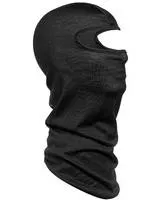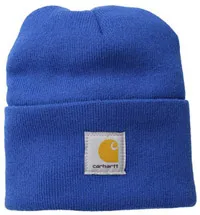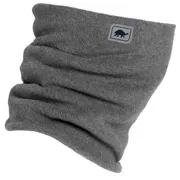Budget Cold Weather Clothing
Gear for Extreme Conditions
Dressing for seriously cold weather without buying expensive clothing for extended periods outdoors. For work, hunting, ice fishing, snow-mobiling, snow-shoveling or just enjoying the winter.
![]() This is the US page |
Go to UK
page
This is the US page |
Go to UK
page
![]()
Foundation / Base Layer - A close fitting insulating layer next to the skin that also draws perspiration away to keep you comfortable. 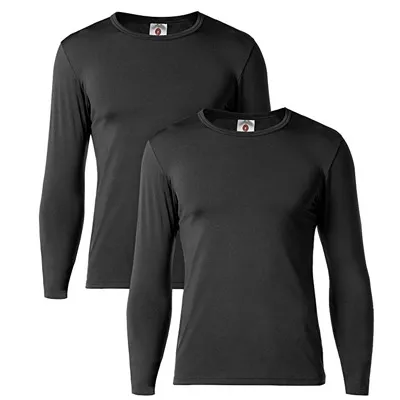 Men's - LAPASA Fleece Lined Long Sleeve Shirt | Women's, light mid or heavy weight, lots of colors 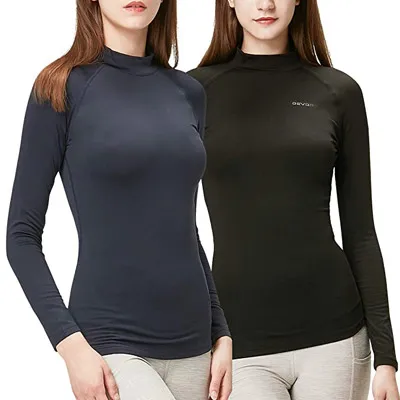 Women's - Devops compression baselayer thermal turtle neck - 2 pack | Men's, several colors 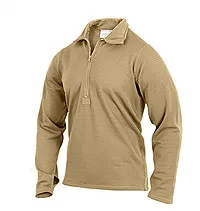 One
of the most important aspects of underwear for the coldest
conditions is that it can wick away sweat from the skin.
With so much clothing on top, sweat can build up and
become cold and clammy especially after activity.
The key is to avoid cotton and go for synthetics
such as polypropylene and polyester. Much more
effective than your usual underwear and the biggest "bang
for the buck" layer.
Merino
wool is the best material for thermal underwear
but doesn't fall into the budget category. One
of the most important aspects of underwear for the coldest
conditions is that it can wick away sweat from the skin.
With so much clothing on top, sweat can build up and
become cold and clammy especially after activity.
The key is to avoid cotton and go for synthetics
such as polypropylene and polyester. Much more
effective than your usual underwear and the biggest "bang
for the buck" layer.
Merino
wool is the best material for thermal underwear
but doesn't fall into the budget category.Mid / Heavy weight long underwear - Heavy weight thermal tops in particular can be used as a shirt indoors which makes them more versatile. Men's | Women's Lightweight underwear - For less extreme conditions or if you don't like a heavy base layers and use thicker layers over the top instead. Men's | Women's |
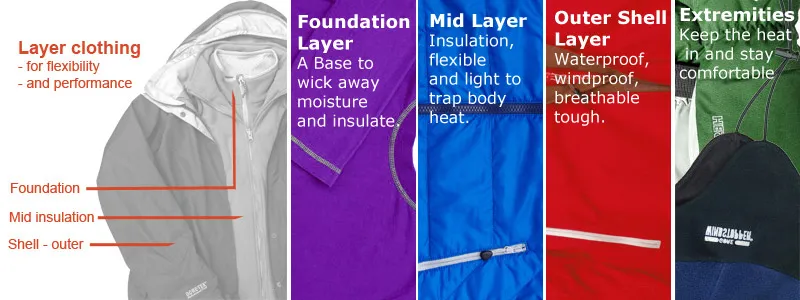
Layering - I spent two years in Antarctica as a marine biologist, the coldest thing I did was setting and retrieving nets through the sea ice in winter using snow mobiles. Our clothes consisted of several layers, which worked better than a small number of thick layers. Later as a school teacher I gave talks on Antarctica for which I would borrow cold weather clothing issued by the British Antarctic Survey to dress one student in thin layers like I wore, and another in fewer thicker layers that were easier to put on . The first would always get hotter faster and need to take the gear off first. Layers work best.
It may seem obvious, but layers need to be on the legs too, shorts can't be compensated for by 3 top layers and a parka.
 Mid Insulation Layers
- flexibility is important along with ventilation
during exertion or in warmer conditions, with the ability
to wrap up warm again when the temperature drops.
Mid Insulation Layers
- flexibility is important along with ventilation
during exertion or in warmer conditions, with the ability
to wrap up warm again when the temperature drops.A very varied layer that can be put on or off, unzipped, loosened, sleeves rolled up etc. during warm periods or activity then closed down fully and another layer put on top when the weather gets bad again. It should be a soft layer for comfort and to make it a more effective insulator. Zips are good and allow for excess heat to be quickly vented. Materials:
Upper body - thick shirts, sweaters and jackets long enough at the back to avoid exposed skin or lower layers during bending. Fleeces -
Men's
Women's
Vest / gilet -
Men's
Women's Lower body - Thick warm pants of heavyweight synthetic material such as polyester/cotton. Pants should be somewhat loose fitting and not tight as this allows a layer of air and doesn't restrict the circulation.. Denim is about the worst possible choice. Bibs and overalls are particularly good, they add extra core insulation and keep you covered while bending or stretching.
More winter pants - Men's Women's, Insulated bib overalls - Men's Women's |
|
The Outer / Shell Layer
- direct protection from the weather, windproof
and may be waterproof depending on the temperature use.
Simply a "shell" with no additional insulation
or with insulation built in. The outer shell layer can be insulated or not. It may seem odd that the most versatile and effective cold weather shells are fully windproof, but not always additionally insulated. In this way they can be used as the outer layer over any combination of insulating layers underneath. It takes a little more time to get dressed this way, but it works at least as well as a large heavily insulated parka, though more cheaply and for a more versatile and therefore more often used collection of clothing.
It is important for the outer layer to have draw-cords and cuffs that are elasticated or can close to prevent warm air being pumped out with movement, a hood is essential (unless wearing a helmet). |
|
Extremities - head, hands and feet, ankles, wrists and neck. Feet - Insulation from the cold ground is as important as insulation from the cold air
Thick insulated soles are as important as insulated uppers as a lot of heat can be lost through the only part of our body with which we contact the frigid ground. Boots for the coldest weather have soft insulated uppers, and they are going to be big, it's the insulation that makes them that way. Boots for extreme cold conditions: Men's Women's 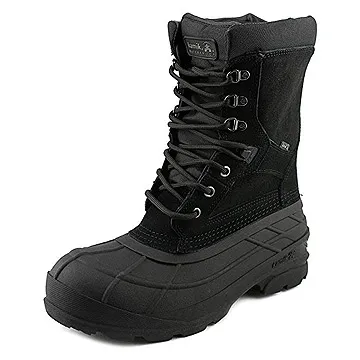 Kamik Men's Nationplus Rated -40F / -40C, leather upper, 200g thinsulate insulation, traditional laces 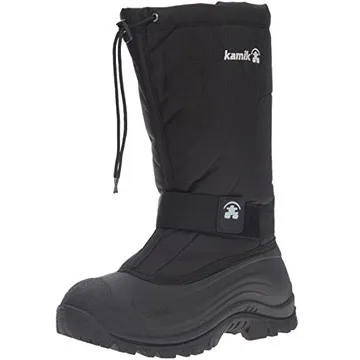 Kamik Greenbay 4 - Men's Rated -40F / -40C, waterproof nylon uppers women's 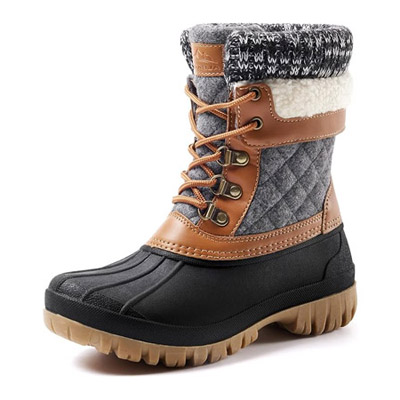 Aleader Winter Snow Boots - Women's Waterproof shell, Duck boots - men's 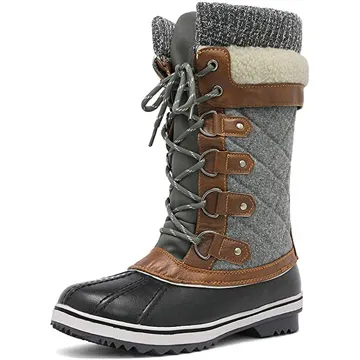 DREAM PAIRS Mid-Calf Waterproof Snow Boots - Women's Warm, water resistant and durable Socks: 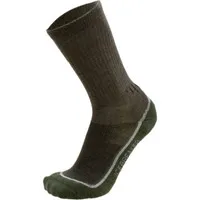 One
or two pairs of thick insulating socks or a
thin
liner pair and thicker over socks make a huge difference.
Wool gives the best insulation, at least 70%
wool is ideal, a small amount of synthetic
material such as nylon or polyester helps durability,
and some elastic material gives a snug fit and prevents
your socks from sliding down. Cheaper mainly synthetic
socks aren't so good, they cause sweating and damp
retention which as well as being unpleasant will make
your feet cold. Too many pairs of socks makes your boots
tight and squashes out much of the insulating air. One
or two pairs of thick insulating socks or a
thin
liner pair and thicker over socks make a huge difference.
Wool gives the best insulation, at least 70%
wool is ideal, a small amount of synthetic
material such as nylon or polyester helps durability,
and some elastic material gives a snug fit and prevents
your socks from sliding down. Cheaper mainly synthetic
socks aren't so good, they cause sweating and damp
retention which as well as being unpleasant will make
your feet cold. Too many pairs of socks makes your boots
tight and squashes out much of the insulating air.Thermal socks: Men and Women's Hands
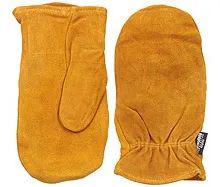 All
things being equal (materials and design) mittens will
keep your hands warmer than gloves. Layering
can be used here too in the coldest conditions, a light
inner glove that allows for handling ability and then
a thicker pair of mitts over the top. These can be insulated
themselves or just be a weatherproof outer layer. The
outer pair should be wind-proof while water-resistance
is always useful. All
things being equal (materials and design) mittens will
keep your hands warmer than gloves. Layering
can be used here too in the coldest conditions, a light
inner glove that allows for handling ability and then
a thicker pair of mitts over the top. These can be insulated
themselves or just be a weatherproof outer layer. The
outer pair should be wind-proof while water-resistance
is always useful.Work mittens The issue with gloves when it gets colder is that the dexterity reduces as the insulation and thickness increases, despite what you may see claimed, there is no magical thin, ultra warm glove that is going to allow you full use of your hands down to minus stupidly cold, it's all a compromise.
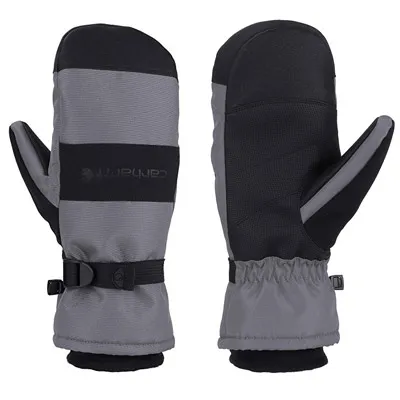 Carhartt Men's Waterproof Insulated Mittens
Carhartt Men's Waterproof Insulated MittensFleece lined 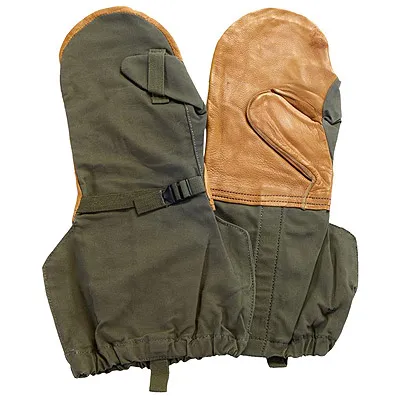 Military - Mitten Shells with Liner designs vary
Rechargeable electronic hand warmers - Power packs that can be used for heat or battery back up for your phone Head
A beanie hat is a very effective shape and can pulled over the ears or should have ear flaps that can fold up. Clean, plain shapes allow a hood to be pulled over and fit closely, bobbles make an air space that reduces insulation. Balaclavas are a great choice, they can roll up as a hat or be pulled down to cover the face and neck. Acrylic is a common material for hats, it is durable and inexpensive. Thinsulate is better at a similar price to acrylic, it is warmer but less hard wearing (but still pretty good). The Neck
A scarf must be worn correctly to get the best use
from it. Wool or a performance synthetic material are
needed (cotton is useless),
the scarf should be worn under the shell garment and
over the insulating layer immediately beneath that so
that it restricts air movement as well as providing
insulation and preventing snow ingress. A neck gaiter
is a neater version of a scarf, a tube of stretchy insulating
material than can be worn like a scarf or pulled up
over the lower part of the face like the bottom part
of a balaclava. |




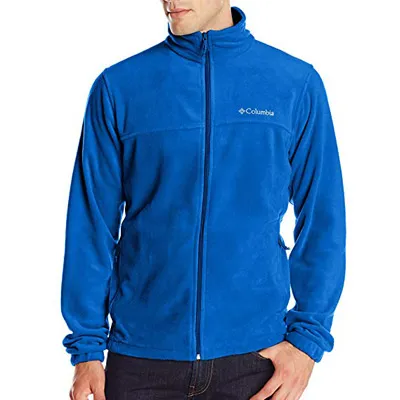
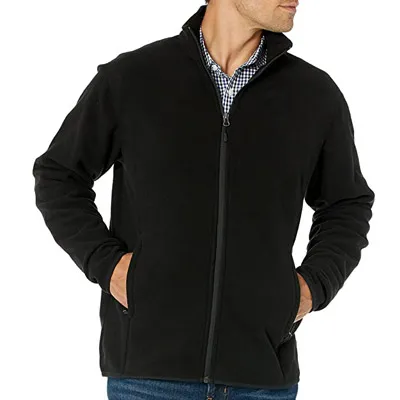
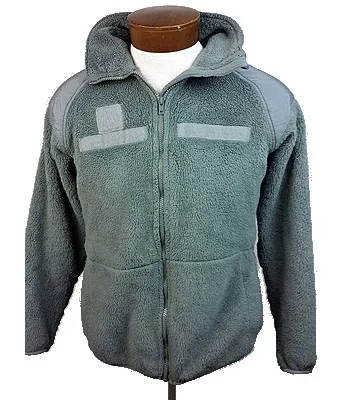
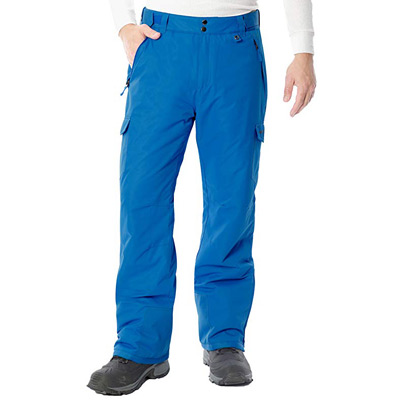
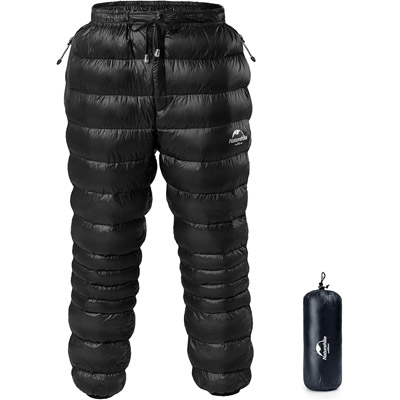
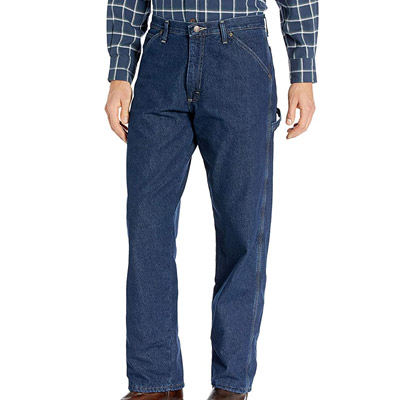
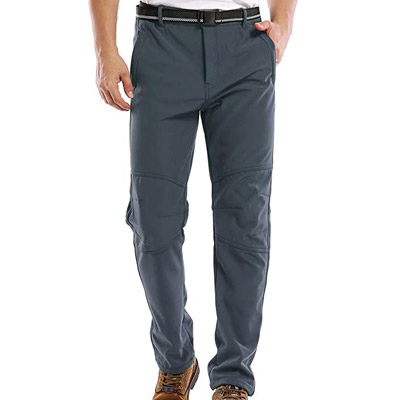
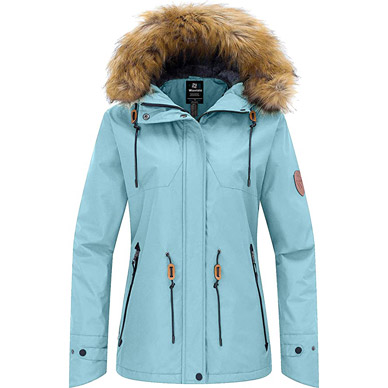
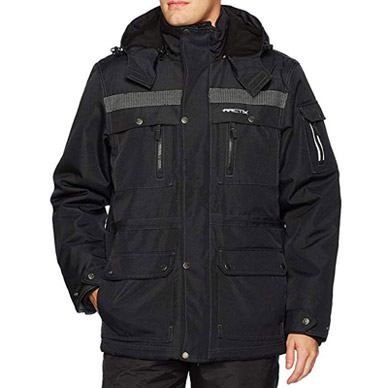
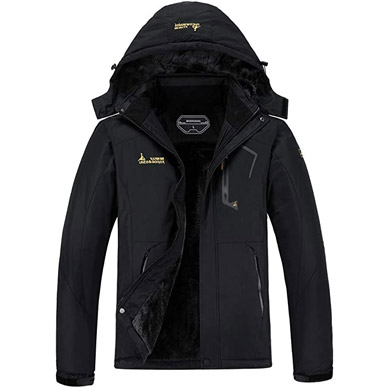
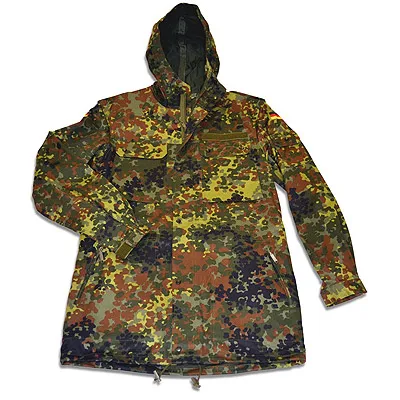

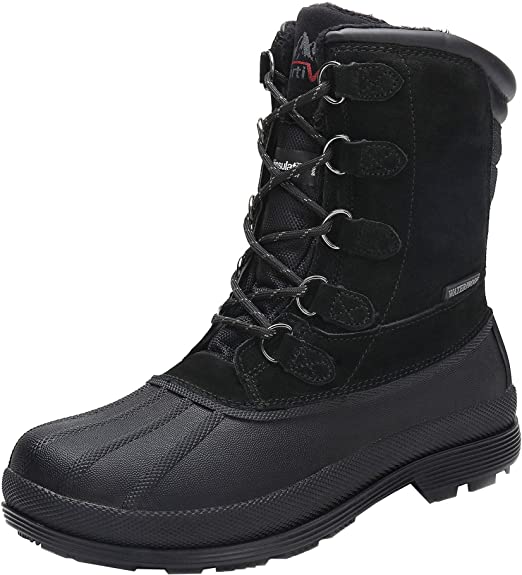
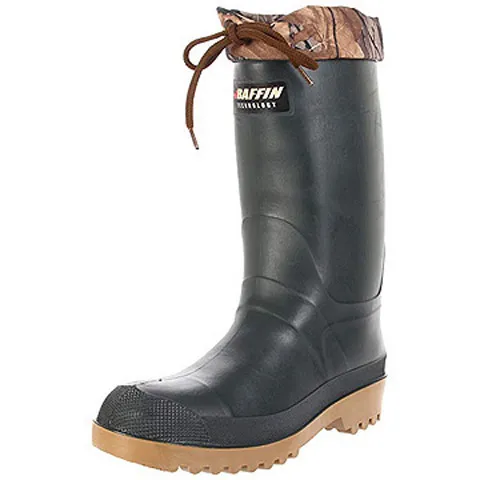
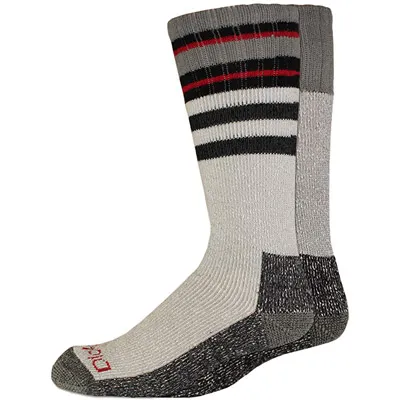


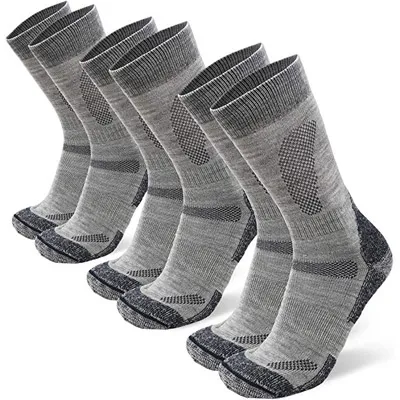
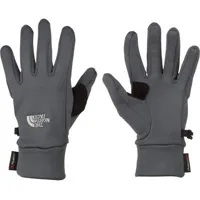

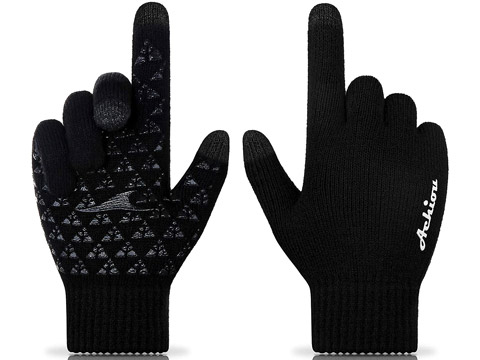
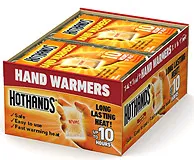 Hand
warmers
Hand
warmers